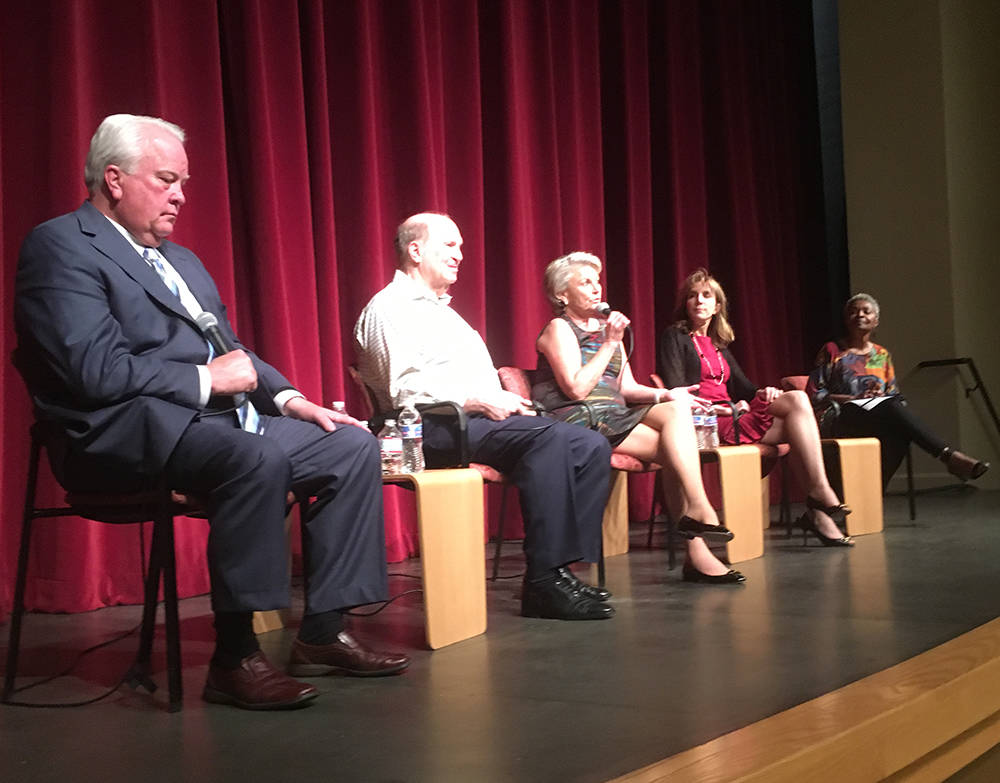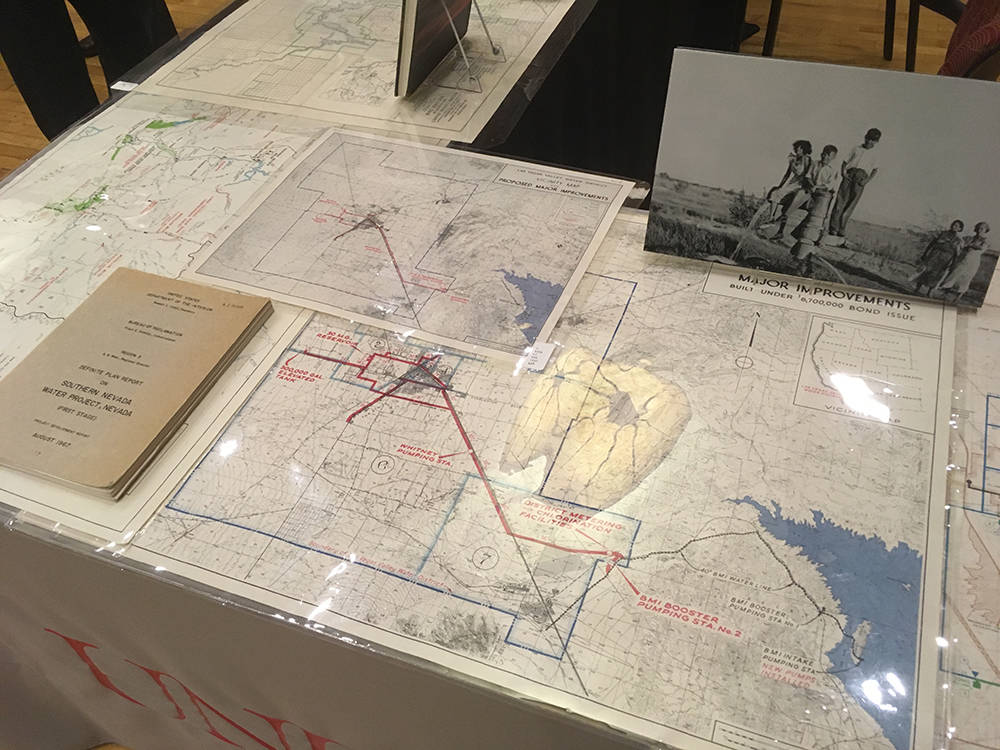UNLV event panel talks immigration, growth, climate change


The “Valentine’s Day Massacre” nearly cut the Las Vegas Valley’s explosive growth off at the knees 26 years ago, when fewer than 1 million people called the region home.
Jurisdictions had been battling one another for growth-sustaining allocations to Colorado River water for years, and the Las Vegas Valley Water District took drastic action Feb. 14, 1991, upon realizing it couldn’t meet any more water commitments: It stopped promising service to new developments. Henderson soon followed suit.
“When Valentine’s Day hit, we could have said, ‘This is as big as this town’s going to get. This is it,” Jacob David “Jay” Bingham, owner and president of lobbying firm JDB, told about 200 attendees at “Turning the Tide: Water in the Desert,” held Sept. 7 at Historic Fifth Street School. He was joined at the UNLV University Libraries’ Building Las Vegas: Summer Speaker Series event by fellow panelists Robert Lewis, president of the Lewis Group of Companies Nevada Division; Pat Mulroy, William S. Boyd School of Law senior fellow; and Virginia Valentine, Nevada Resort Association president and former general manager of the Regional Flood Control District.
The 18-month impasse spurred creation of the Southern Nevada Water Authority, which entered into an agreement with the federal government and, by smoothing over the squabbles, paved the way for the valley’s population to exceed 2 million.
That history wasn’t the only focus of a lively “Turning the Tide” discussion that also touched on U.S.-Mexico relations, the Paris climate accord, the world’s rapidly growing population and the need for continued cooperation, now with California and Arizona.
Event moderator Claytee White, director of the Oral History Research Center at UNLV, asked panelists about flood-control barriers the region faces or has overcome.
Valentine said skepticism among residents, particularly newer ones, was a challenge.
“We had a problem with people in the desert not understanding,” she said. “We’d walk into a room and people had never seen a storm in the desert; they might have never seen it rain. We’d say we were going to build these massive drainages and bridges, and they had no vision of it.”
The future
Mulroy, who was the general manager of the Southern Nevada Water Authority from 1993 until her retirement in 2014, elicited murmurs of surprise in the audience when she said Nevada eventually will have to rely on the Pacific Ocean for water.
“That’s the only place you can successfully augment the Colorado River,” she said, adding that bigger droughts are inevitable. “You’re going to hit a wall, and you’re not going to be able to go any further.”
It’s not a new idea; Bingham, who served three terms on the Clark County Commission in the 1980s and ’90s, said leaders here talked 25 years ago about how to trade water with California.
White asked if Clark County would still have water in 100 years, and Mulroy drew applause when she quickly replied, “Yes. The answer’s very simply yes.
“The Colorado River has been hit by climate change and it’s going to go through decimating periods, but seven states who formerly couldn’t talk to each other, two countries who formerly couldn’t talk to each other, are solving the problem.”
Mulroy and Bingham agreed that continued growth looms large for Southern Nevada, and the world. Bingham said human history is marked by a history of migrations, and the current pattern in North America involves the United States as a northern destination.
“Right or wrong — I’m not in politics to determine that — that migration is going to happen,” he said. “They’re fleeing poverty, unstable governments, fear. They’re coming to the only source they think is safe. We need to do everything we can do to be ready. You’d better be prepared, because that great migration is not for the next 10-15 years; it’s for the next 100 years or more.”
Climate change
“Everybody thinks the easy thing to do is just stop growth,” Mulroy said. “We stopped growth in 2008 (when the Great Recession hit). We’re going to have 9 billion people (worldwide); people are going to live in deserts. There’s no such thing as a safe place from climate change.”
An audience member asked, “With the (Trump) administration’s unwillingness to admit climate change, how far will it set us back?”
Mulroy said she was disappointed to see the U.S. leave the Paris climate accord, but that it means the nation will just have to find another path to mitigate climate change. She also said climate change isn’t a religious issue, and that lawmakers who fight against mitigating it usually are protecting the interests of constituents who work in vanishing career fields.
“We’re going to have to ask, what is it going to take to change the economy of the little town in West Virginia that has been generationally in the coal business? It’s not going to be high-tech,” Mulroy said. “When officials don’t have to go home anymore and defend why they put people out of jobs, (the politicizing of climate change) will end. This is not a conversation about whether (climate change) does or doesn’t exist.”
Contact Brian Sandford at bsandford@viewnews.com or call 702-380-4531. Follow @nweditor on Twitter.
Gold Party
What: UNLV Libraries celebration of the 50th anniversary of Special Collections & Archives
When: 5-7 p.m. Nov. 4
Where: Third floor at UNLV’s Lied Library, 4505 S. Maryland Parkway
Information: Lonnie Marshall, 702-895-2234 or lonnie.marshall@unlv.edu












